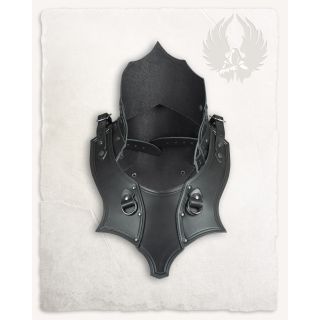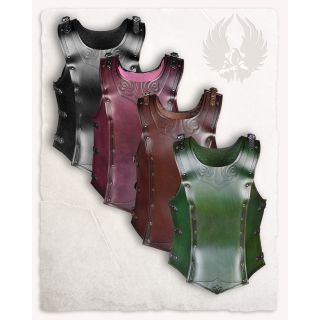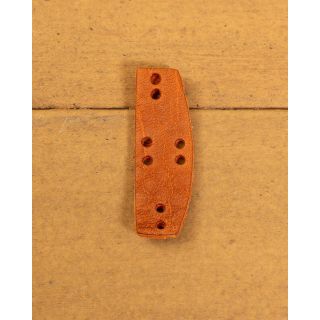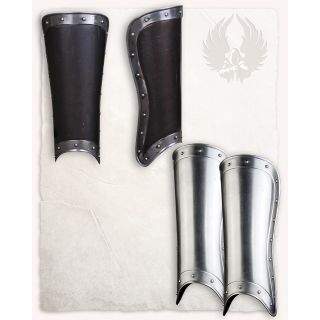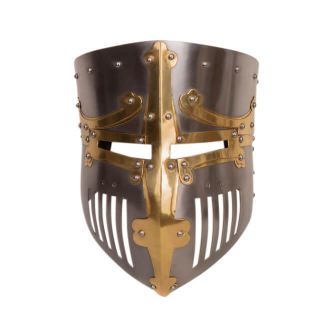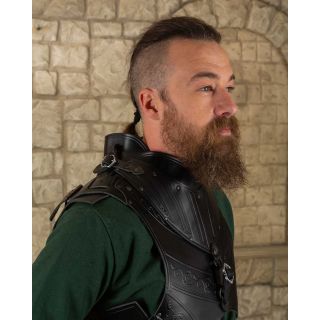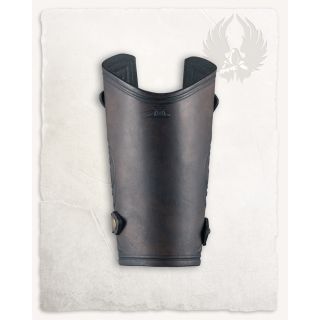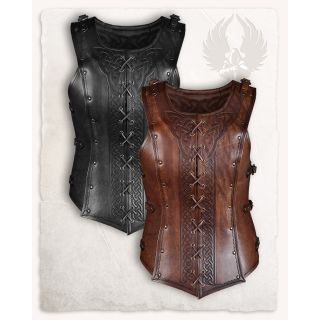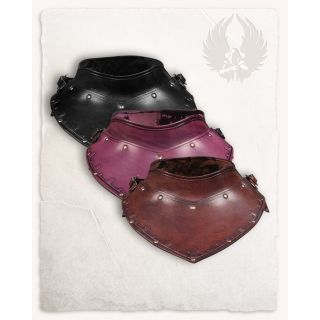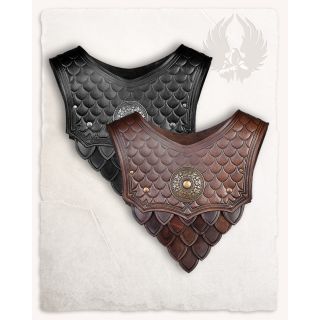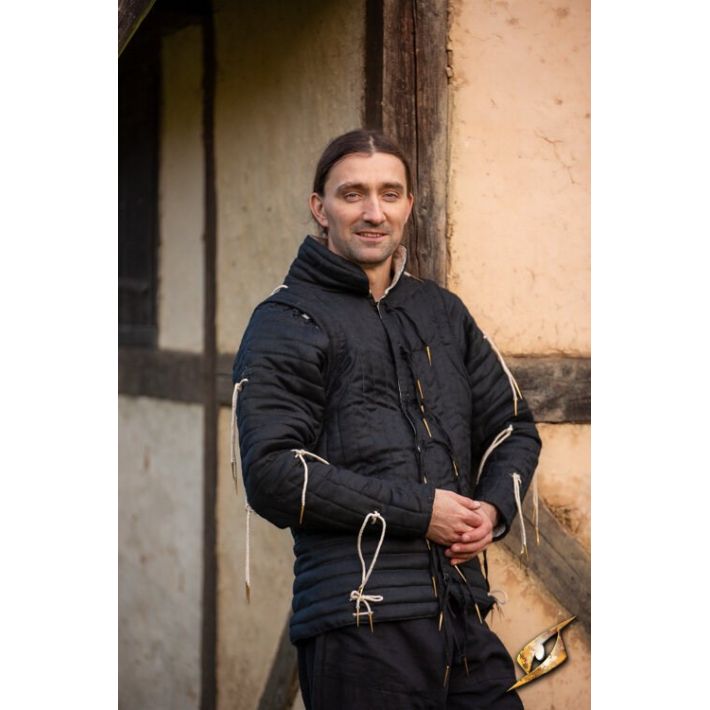

Knightly Gambeson
"The battle had ended, and it was time for the armour to come off. His squire grabbed the helmet first, allowing the knight to breathe more freely. The breastplate was more difficult, as it had a huge dent from where the raider’s battleaxe had hit. The metal had mostly held, though a long gash was cut across. Though it smelled of blood, sweat, and horse fur, the gambeson was next, though he needed his squire to untie it. Once again, it had reduced a nasty wound to a mere bruise. “Make sure it’s repaired. It’s saved my life more times than I can count.”
The Epic Armoury Knightley Gambeson is a padded jacket with long sleeves that covers the wearer from the neck to the hips. The padding is vertical or horizontal depending on the area, allowing for the greatest movement range. While it can serve as a quilted armour on its own, as has been the case since at least 400 BC, its most common use is padding underneath heavier, metal armour. It was a good, if basic, armour, but when combined with plate or chain mail, it stood out as excellent protection against most weapons.
The Knightly Gambeson's outer layer is made from 100% Cotton. The padding is a 50% cotton and 50% polyester mix. The lining is 100% cotton.
Dimensions all in cm:
|
|
S |
M |
L |
XL |
XXL |
|
Chest Width |
46,5 |
51 |
56,5 |
62,5 |
71 |
|
Length |
63,5 |
70 |
72 |
74,5 |
78 |
|
Neck Width |
19 |
20 |
20 |
21 |
21 |
|
Sleeve Length |
64 |
66 |
67 |
67,5 |
68 |
|
Sleeve Width |
16,5 |
17 |
17,5 |
18 |
26 |
|
Waist Width |
41 |
45,5 |
51 |
57,5 |
65,5 |
Natural leather products are very durable, but require regular maintenance with leather care products to stay flexible and to increase
Cleaning
It is best to start cleaning leather from the most delicate measures possible. Therefore, use a damp cloth with a little soap. If this is not enough - use a hard brush to remove dirt. Remove the soap with a separate damp cloth to wipe away any soap residue, and then use a dry cloth to wipe away the remaining water from the leather. Let it dry completely before the next maintenance step.
Conditioning
Always keep the leather maintenance after cleaning, because the soap will remove some of its natural oils. Apply mink oil, olive oil or professional lanolin-based fats to clean leather using a clean cloth, gently rubbing a small amount of fat with circular movements. Wait for the fat to soak in the leather, then use a clean cloth to clog the residue. For maintenance, you can also use beeswax by heating it to a liquid state and applying it to the leather. Remember that the leather so preserved will be harder and significantly darken what sometimes is the desired effect.


| Reference | Combination name | Availability in store | Availability at manufacturer | Price | Add to cart |
|---|---|---|---|---|---|









